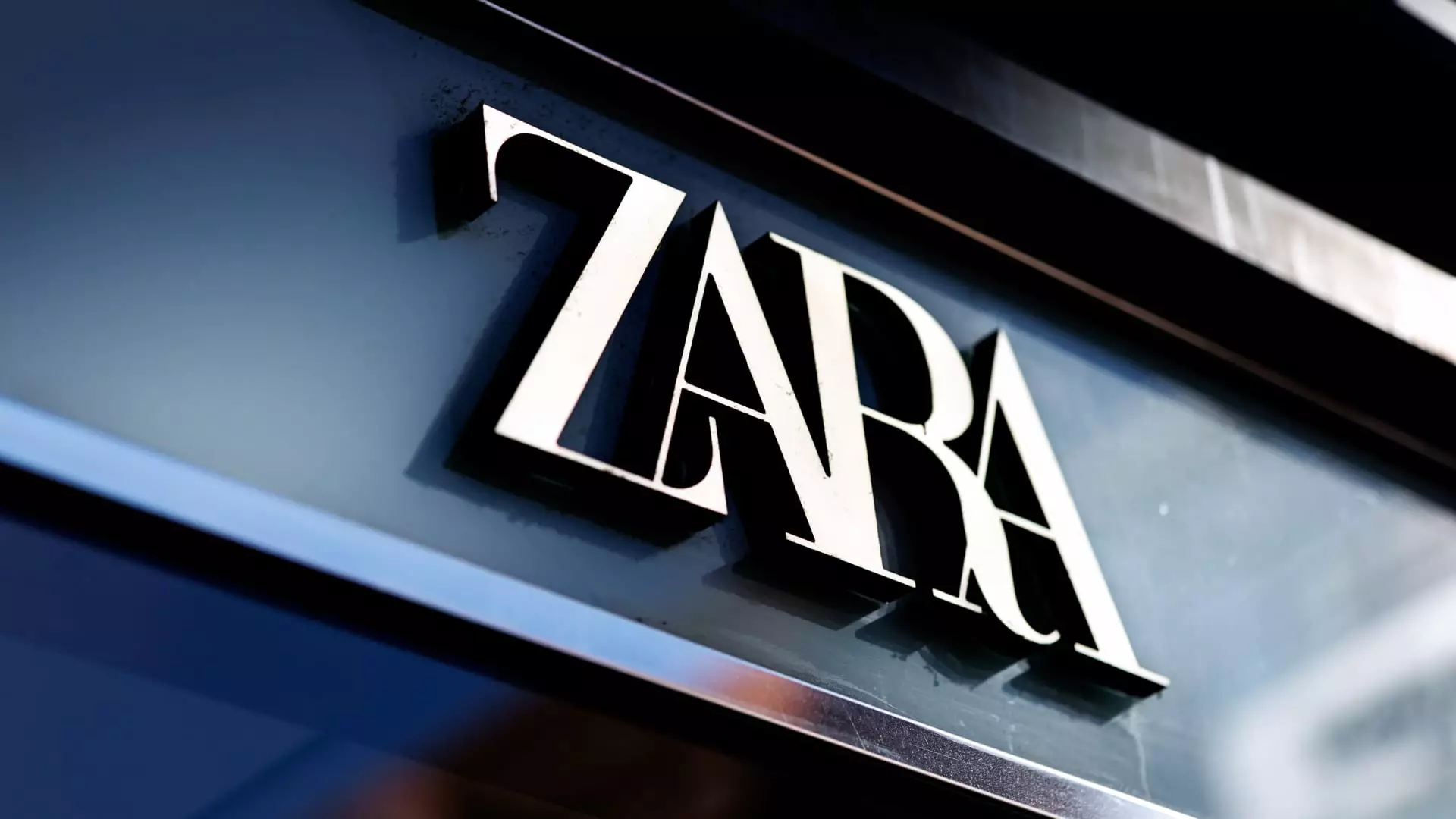Zara owner Inditex has found itself facing an unexpected downturn amidst a landscape filled with economic turbulence. The news that their quarterly sales had come in below expectations sent shockwaves through the fashion retail sector, leading to a notable 4.4% decline in share prices – a clear signal that the market is growing increasingly wary of the company’s financial health. It raises a crucial question: has Inditex, once a universally respected name in fast fashion, become a complacent giant unable to adapt to the rapidly changing environment surrounding retail?
The reported revenue of €8.27 billion for the fiscal first quarter fell short of the €8.39 billion anticipated. While not devastating in isolation, combined with net income figures that also disappointed, it introduces a troubling narrative of stagnation. This isn’t purely indicative of Inditex’s performance; rather, it’s a reflection of the broader economic factors shaping consumer behavior. This reality, set against forecasts and external pressures, only serves to amplify doubts on the company’s agility and long-term strategy.
Assessing the Impact of Economic Uncertainty
During an earnings call, Inditex’s head of investor relations, Gorka García-Tapia Yturriaga, articulated a cautious outlook, describing the current economic climate as “difficult to predict.” Herein lies a potential warning sign: the once-modular supply chains now partially serve as double-edged swords. While diversified production across various geopolitical landscapes offers resilience, it also introduces a level of complexity that requires impeccable management—aquality that seems to falter when faced with external shocks like tariff fluctuations and global market volatility.
The slowdown in the summer sales period—a mere 6% growth compared to last year’s 12%—further emphasizes the pressures weighing on Inditex. The strong performance the company enjoyed in the previous year is now in stark contrast to its current state. Analysts like Mamta Valechha of Quilter Cheviot argue that the situation begs critical evaluation, not just of growth trajectories but also of how these financial results reflect a potentially changing consumer sentiment.
Competitive Landscape: Risks and Opportunities
It’s essential to contextualize Inditex’s performance within the competitive landscape of fast fashion. Rivals like H&M also report weaker-than-expected revenues, demonstrating that this isn’t a solitary struggle. However, the emergence of disruptive brands such as Shein and Temu complicates the picture. While these platforms deliver unparalleled flexibility and cost-efficiency, they could signify a paradigm shift that traditional retailers may be ill-equipped to navigate.
Yet the sense of concern regarding Inditex doesn’t stem from mere competition. Analysts are now hesitating to fully endorse the value of the stock, questioning whether the company’s premium market position can remain unchallenged amid the normalization of growth. The stark reality is that while Inditex has built a reputation on its robust business model, the sustainability of that model hinges on the ability to evolve swiftly in a fast-paced environment.
The Moral Dilemma of Consumer Sentiment
Interestingly, the complexities facing Inditex extend beyond numbers and competition; they penetrate into the fabric of consumer sentiment. As the company’s high street brands adapt to shifting fashion tides, observing a significant change in how consumers allocate their spending is essential. If consumers are hesitant to spend amid potential economic decline, that hesitation will inevitably reverberate through brands like Zara, Pull & Bear, and Bershka.
At a time when social consciousness plays an increasingly vital role in consumer decisions, brands that don’t align their practices with evolving expectations will find it challenging to thrive. Inditex needs to navigate beyond mere profitability and into the realm of ethical consumerism and sustainability, which younger demographics increasingly prioritize in brands they support. The staggering pace at which the retail environment changes could easily overshadow the company’s historic successes if it does not act decisively.
In essence, the perilous intersection of economic uncertainty, competition from disruptors, and shifting consumer behaviors presents a tumultuous road ahead for Inditex. Would they capitalize on their strengths, or will they find themselves another cautionary tale in the annals of retail history? The next chapters in this saga remain unwritten, but one can only hope that this giant stirs from its complacency to reclaim its place as an industry leader.

